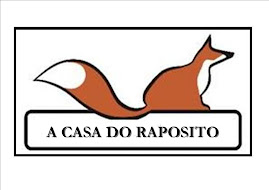 The Synod of Verona took place in 1184. It was convened for the specific purpose of condemning the Waldensians, another Gnostic group whose beliefs were very similar to those of the Cathars who also travelled and preached in pairs as did the Bogomils. It was clearly only a matter of time.
The Synod of Verona took place in 1184. It was convened for the specific purpose of condemning the Waldensians, another Gnostic group whose beliefs were very similar to those of the Cathars who also travelled and preached in pairs as did the Bogomils. It was clearly only a matter of time.In 1198, the very mis-named Innocent III tried to launch a crusade against the Cathars but couldn't drum up much support. The nobles and knights lived side by side with the Cathars, some, such as the Count of Toulouse, were clearly Cathar sympathisers and in some cases, their mothers and sisters were Parfaits and Parfaites. "Why would we want to persecute them'' the knights said in Albi. "They are our neighbours and our friends and we respect them and their honest work". Innocent had to be content with seething and fuming while his church became more and more shipwrecked by the doubts of the people.
But after Cathar sympathisers were suspected in the murder of a Papal legate near Toulouse in 1109, Innocent decided to make a call for Holy War and this time he had the backing of the King of France. He exhorted the knights to exercise their religious zeal, promising them full remission of sins for any deeds they carried out in the name of God. These men, for the most part, were mercenaries, interested in nothing but the spoils of war. Near Beziers, a town of some 20,000 both Cathar and Catholic, the townspeople were so terrified of the massed forces that they hid in the Church of Mary Magdalene. When asked by a commander what he should do in this situation, their leader Armaud Amaury most famously exclaimed:
`Kill them all; God will recognise his own`.
What followed over the next 40 years was some of the most blatant butchery ever carried out in the name of Jesus. At Minerve after a long and drawn out siege which ended when the water supply was contaminated, 140 went to the flames. When the knights approached their leader - who had offered clemency to any who accepted the Catholic faith - and said that they weren't there to see heretics escape, he told them not to worry. "They won't recant", he said. He was right. Chroniclers of the time say that the heretics "hurled themselves into the flames". At Lavaur, 400 Perfecti died the same death. Finally in 1244 at Montsegur, perhaps the most famous Cathar site of all, 225 Parfaits and Parfaites died by being burned alive at the bottom of the mountain upon which stood the castle which had been the last remaining Cathar stronghold.
After a prolonged siege, the defences of the castle of Montsegur were breached by a group of Gastons. The residents asked for 15 days to prepare for their deaths and distributed their clothes and few possessions to prepare for a death they did not believe in. Those who were credentes were given the option of deciding during those days whether they would give up their faith and walk free or not. It is on record that 20 credentes asked the leading Parfait Bertrand Marti to be consoled. What is extraordinary about this is that as ordinary believers they could have survived the capitulation, but as Parfaits they knew they would be burned alive.
The words of the Consolamentum are known to us. Part of the sacrament states that the supplicant say: "I have this will and determination. Pray to God for me that he will give me strength".
They would have needed it.
.




No comments:
Post a Comment